November 10 to 14th
Heron Island, located about 30 km offshore, is actually a coral cay completely surrounded by a fringing coral reef (just like one of those idyllic romantic tropical islands you see in movies)
. The coral cay is composed of broken coral fragments and sand that have been piled up by prevailing winds and waves. Eventually the cay grows in size as plants take root and build soil. Heron Island is a small cay – we could walk around it in 20 minutes – but it has accumulated enough soil to grow small trees. The trees can survive because of a fresh water lens that develops within the island from accumulated rainfall. This freshwater lens is lighter than sea water so it floats on top of the salty water table and is available to trees with long roots.
One third of the Island is occupied by a scientific research facility and Heron Island Resort where we stayed, Capricornia Cays National Park occupies the rest. The location currently occupied by the Resort started out as a turtle soup canning factory in 1925 but quickly ran out of turtles to can and closed down. The cannery was transformed into a tourist resort in 1936 and has evolved as such to the present day. A particularly interesting addition to the resort was the purchase in 1945 of a rusting hulk that once was the H
.M.C.S. Protector. It was towed to Heron Island and used as a breakwater to protect boats waiting at the reef's edge for dinghies to ferry passengers to the resort. It now adds character to the island and is an attraction for snorkelers and SCUBA divers.
Sher and I stayed in a basic wooden cottage that was far enough away from the centralized hot water tank to ensure we never received anything but small amounts of warm water. This is unfortunate because we had to run the tap for about five to 10 minutes plus to get warm water. Counter productive as resort asks that showers be kept to 3 minutes. Don't let water warm up? - it is colder than the 24 degree ocean. Island is under a strict water conservation program (they produce all their fresh water by reverse osmosis, an expensive process). All the grey water is used to water the grounds to reduce fire hazard and keep the vegetation green.
However what the Resort lacked in hot water, the Island more than compensated with idyllic coral island charm, warm tropical aquamarine waters and a population of birds with real character
. We arrived in the height of nesting season for the Black Noddy, a small dark-coloured, rather dapper tern. There are between 70,000 and 120,000 birds nesting in their tree of choice called the Pisonia (a tree found only on coral cays on the GBR because it requires high concentrations of calcium to grow). Well, let me tell you, you haven’t lived until you find yourself in the midst of thousands of birds nesting in trees only feet above your head. The birds were everywhere! Anywhere we walked other than on the sandy beach, we were under the nesting birds. We wore hats and it was not unusual to need a laundry service on a daily basis. The staff was power washing the sidewalks every morning to remove some of the constant rain of guano. Oddly there was little or no smell, unusual given that the birds feed on fish and sea food (perhaps our olfactory senses were so numbed after the first day we didn’t notice it??).
Actually the birds were a delight to watch. After mating on the beach the pair would try and find a good location for a nest on a Pisonia tree
. For some reason the Black Noddy has decided that it will build its nest mainly from the leaves of the Pisonia. So the female sits and defends the location of the nest to be and the male goes off for building materials. He searches for and finds what he thinks is the perfect Pisonia leaf. He arrives and proudly gives it to his mate and waits nervously to see if she will accept it. If she does not like it, she pitches it off the branch. Crestfallen, but ever hopeful the male goes in search of the perfect leaf. Smart males have noted that females like leaves with a fair amount of moisture so it helps to run the leaf through the irrigation system or to give it a quick dip in the ocean. Eventually a small platform of leaves glued together with guano is built and the eggs are laid. The male brings food while the female incubates. When the eggs hatch the male feeds Mom and the kids until they are old enough to leave the nest.
In what seems a bizarre ecological relationship, the Pisonia produces a sticky seed pod that ripens and drops to the ground when the Noddies are nesting
. Often when a Noddy tries to pick it up, it sticks to the bird and as the bird thrashes around trying to remove it, more seeds that litter the forest floor get attached. The Noddy becomes so entangled that it cannot move and perishes from lack of food. When the bird decomposes, nutrients flow back into the ground to be used by the Pisonia. So the Noddies inadvertently pay the supreme sacrifice to ensure that there will be a healthy population of Pisonia to provide nesting locations for the next generation of birds.
The island also has a nesting population of up to 30,000 Wedge-tailed Shearwaters or Mutton Birds. And we were lucky enough to arrive in the height of the nesting season. Thankfully these birds did not nest in trees, but rather in burrows in the ground, under trees, under buildings, everywhere a burrow can be dug on the island. The nesting pair also split the nesting chores. One of the pair goes out fishing all day returning to the burrow as the sun sets and darkness falls
. Well, the partner that was sitting in a musty burrow incubating the egg all day is more than thrilled to hear the arriving partner and climbs out of the burrow to sing "hello, welcome back, I love you". The partner that has been fishing sings a reply. Sounds romantic doesn’t it. But this singing goes on all night and to the human ear it sounds like wailing banshees! Perfect soundtrack for Hallowe'en .
Ed resorted to ear plugs to get to sleep and Sher used the old pillow-on-the-head technique (she usually sleeps this way) and no trouble sleeping at all.
It is believed that sailors of old anchored off an island where mutton birds were nesting heard this plaintive wailing and moaning all night, only to find that no one was on the island when they explored it by day. So stories of lost souls and haunted islands started to circulate.
The Shearwater has polarized vision, ideal for catching fish in the sea in daylight, but lousy for gauging distances accurately at night
. It is not unusual to hear a bird crash into a tree branch and land with a thump on the ground. It gets up, gives itself a shake and heads for its burrow on foot. One naturalist tells of a couple of birds that would simply stop flapping when near their burrow and crash land rather than even try for a dignified landing! This made for some athletically challenging trips back to the cottage when we had eaten late. Well, not really that late as it gets dark around 6:30/7ish in this area, some trips involved dodging careening birds on their way home. Never got hit but it was touch and go there at times.
Once the shearwater hatchlings reach a certain size, they are abandoned by their parents. The young birds live off their fat reserves as they grow and learn to forage for themselves. Such a strategy can work on an island with no predators other than Silver Gulls and egrets which may take the smallest birds but not the more mature ones.
Mutton birds get their name from the hatchlings that store the rich sea food brought by the parents as fat reserves and soon look like plump butterballs
. Sailors of old ate these birds and the fatty taste may have reminded them of mutton. A mutton bird industry still exists in Tasmania where the young birds are collected, processed and sold as whole birds ready for roasting or as mutton bird oil. Needless to say, it is as controversial as our sealing industry.
Another real bird personality is the Buff-banded Rail. Normally a shy retiring bird, more often heard than seen, the population on Heron was different, more like a bunch of extroverts on steroids! The birds are unabashed scroungers and moochers. They patrol the perimeter of the screened dining hall and wait by the door. The moment it is opened by arriving or departing diners, one or two rails dash inside and head for areas of greatest fall out, the tables where little kids are eating. They apparently love high fat content food best - greasy pizza, French fries, deep fried sea food, etc. One of the resort guides tells of a brazen bird leaping up using her lap as a springboard to snatch a French fry from her fingers and devouring it before she knew what happened
. We observed one hop up on a patio table where fancy drinks were served and help itself to a drink and the fruit garnish. So much for shy retiring rails.
Heron Island is surrounded by about 25 square kilometres of fringing reef. The reef here is a delight. Great coral formations, millions of fish of all colours, shapes and sizes and an abundance of giant sea cucumbers vacuuming the sea floor to help keep the reef healthy. Because the waters are so shallow and so very clear parrot fish, white tip and black tip sharks, eagle and cow tail rays and many other large fish can be seen from the promenade and the dock. The sharks tend to leave people alone with the only recorded incident being a bitten hand. This occurred when a person tried to rescue a baby sea turtle from becoming a shark’s lunch and reached into its mouth to take away the hatchling.
Because the water is so shallow, reef walking at low tide is a popular activity. Imagine a large sandy plain with a variety of corals scattered around like a submerged boulder field
. It is easy to walk around in the thigh-deep water using a stick for balance and carrying an underwater viewer (a large tube with a glass window in the bottom). The most difficult thing is to avoid slipping on the many types of sea cucumbers scattered over the sandy sea floor. We saw a good variety of corals, large and colourful clams, green turtle grass, soft corals waving in the currents and the occasional small shark scuttling away rapidly. If these little sharks get trapped in a tide pool, no problem. They just use their front fins to haul themselves out of the sea, over the rock, and into the next pool. BBC filmed these “walking” sharks for an episode of a nature series hosted by the late David Attenborough.
I took a tour on the semi-submersible operated by the resort. Passengers are seated in the observation chamber located well below the water’s surface and are able to get a close-up view of the reef. Way more fish live on this part of the reef than we saw at Agincourt
. We also saw over a dozen Green Turtles swimming by or resting on large corals.
In addition to the spectacular display of coral “gardens” the skipper took Ed & company past the Heron “bommie” an ancient and giant coral growth that is the location of a cleaning station. Here, the guide explained, large ocean going fish come for body and oral hygiene work. Numerous small cleaner fish swarm over the large fish picking off and eating parasites, dead skin and other irritants. The large fish even open their mouths for a good gum and tooth cleaning as the cleaner fish aggressively remove food particles. Tempting as it must be, the larger fish do not simply close their jaws when they have a mouthful of cleaner fish. I guess it’s just too hard to find a good dental hygienist/dentist down there (and we all know what that’s like!).
Sher, of course, elected for the snorkelling option. No barriers, very few folk in the area. Plenty of flora and fauna
. It was idyllic. Memories that will be visited again and again.
ED (Sher lounged at cottage):
Green turtles were just starting to nest on the island (a bit earlier than usual - at peak season over 250 turtles a night come ashore to nest). I went out one night after dark and started to walk along the beach in search of turtles coming ashore. Using my small flashlight sparingly not to frighten the turtles I came upon what looked like tracked vehicle marks on the beach emerging from the water and heading toward the vegetation above the high tide mark. Following the track I soon found the turtle by nearly tripping over a crouching person. She was watching the turtle which was completely occupied digging a nest in the sand using her hind flippers alternately as scoops. After about an hour of slow sporadic digging the large turtle (they can weigh over 400 pounds) dug a substantial hole and paused. I thought, this is it; she is going to start laying eggs
. Not so, she decided this was not the right place for a nest, hauled herself out of the hole and made her way deeper into the sparse vegetation.
I was lightly dressed and a chilly wind was blowing. It was after midnight, so wishing the turtle well, I called it a night. I had observed sea turtles nesting in Trinidad and again felt very privileged to be part of a ritual performed by this amazing creature whose ancestors first appeared on this planet well before the dinosaurs. As I walked back to the cottage under a night sky filled with brilliant stars and a half moon rising out of the ocean, I saw a person sitting quietly on a lawn chair on the beach. She said in a strongly accented voice, “The turtles will come”. Yes, I thought, they will come as they have for the past 120 million years .
It took combined will power to leave Heron Island.
Oh and, "Heron Island - a misnomer"":
there are NO herons on the island, nor has there been. Early Europeans saw the egrets and thought they were herons hence the name....
Heron Island - a misnomer
Monday, November 10, 2014
 Heron Island, Queensland, Australia
Heron Island, Queensland, Australia
Other Entries
-
13Rainforest House
Oct 1229 days prior Kuranda, Australiaphoto_camera5videocam 0comment 5
Kuranda, Australiaphoto_camera5videocam 0comment 5 -
14Stickybeaking in Kuranda
Oct 1427 days prior Kuranda, Australiaphoto_camera9videocam 0comment 0
Kuranda, Australiaphoto_camera9videocam 0comment 0 -
15Aussie word of the day: SHIRTFRONT
Oct 1526 days prior Kuranda, Australiaphoto_camera0videocam 0comment 0
Kuranda, Australiaphoto_camera0videocam 0comment 0 -
16TERMITES
Oct 1625 days prior Kuranda, Australiaphoto_camera1videocam 0comment 0
Kuranda, Australiaphoto_camera1videocam 0comment 0 -
17NATURE NOTES:
Oct 1625 days prior Kuranda, Australiaphoto_camera3videocam 0comment 1
Kuranda, Australiaphoto_camera3videocam 0comment 1 -
18Temple & mangroves
Oct 1625 days prior Cairns, Australiaphoto_camera7videocam 0comment 0
Cairns, Australiaphoto_camera7videocam 0comment 0 -
19MEANDERS CONTINUE:
Oct 1823 days prior Kuranda, Australiaphoto_camera8videocam 0comment 0
Kuranda, Australiaphoto_camera8videocam 0comment 0 -
20UNEXPECTED
Oct 1823 days prior Herberton, Australiaphoto_camera17videocam 0comment 1
Herberton, Australiaphoto_camera17videocam 0comment 1 -
21AUSSIE WORD OF THE DAY: FOSSICKING
Oct 1922 days prior Kuranda, Australiaphoto_camera0videocam 0comment 0
Kuranda, Australiaphoto_camera0videocam 0comment 0 -
22Aussie word of the day: DAMPER
Oct 2219 days prior Kuranda, Australiaphoto_camera1videocam 0comment 0
Kuranda, Australiaphoto_camera1videocam 0comment 0 -
23Casso-wary!!
Oct 2318 days prior Daintree, Australiaphoto_camera12videocam 0comment 0
Daintree, Australiaphoto_camera12videocam 0comment 0 -
24MOSSMAN GORGE & DAINTREE
Oct 2318 days prior Daintree, Australiaphoto_camera11videocam 0comment 0
Daintree, Australiaphoto_camera11videocam 0comment 0 -
25RABBITOHS
Oct 2417 days prior Kuranda, Australiaphoto_camera3videocam 0comment 0
Kuranda, Australiaphoto_camera3videocam 0comment 0 -
26Like
Oct 2417 days prior Kuranda, Australiaphoto_camera1videocam 0comment 2
Kuranda, Australiaphoto_camera1videocam 0comment 2 -
27Great Barrier Reef - Quicksilver Wave Piercer
Oct 2813 days prior Port Douglas, Australiaphoto_camera7videocam 0comment 0
Port Douglas, Australiaphoto_camera7videocam 0comment 0 -
28Willie Gordon & "Gangurru" carnage
Oct 3110 days prior Cooktown, Australiaphoto_camera14videocam 0comment 0
Cooktown, Australiaphoto_camera14videocam 0comment 0 -
29Split Rock
Nov 019 days prior Cooktown, Australiaphoto_camera9videocam 0comment 0
Cooktown, Australiaphoto_camera9videocam 0comment 0 -
30Heron Island - a misnomer
Nov 10 Heron Island, Australiaphoto_camera28videocam 0comment 1
Heron Island, Australiaphoto_camera28videocam 0comment 1 -
31Atherton Tableland
Dec 2747 days later Atherton, Australiaphoto_camera34videocam 0comment 0
Atherton, Australiaphoto_camera34videocam 0comment 0 -
32Heat, Lava Tubes & Emus
Dec 2747 days later Cairns, Australiaphoto_camera24videocam 0comment 0
Cairns, Australiaphoto_camera24videocam 0comment 0
Comments
2025-05-23
Comment code: Ask author if the code is blank

 Heron Island, Queensland, Australia
Heron Island, Queensland, Australia
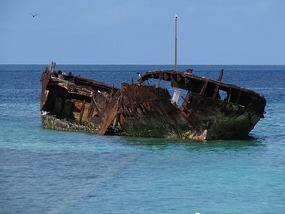
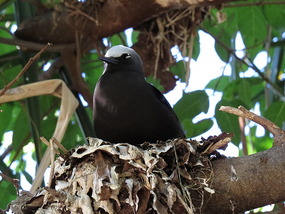


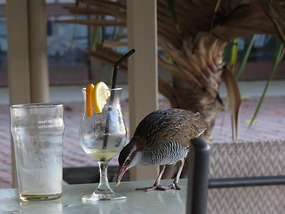
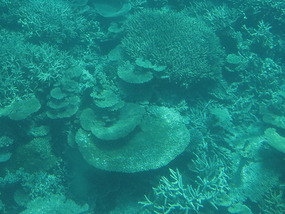
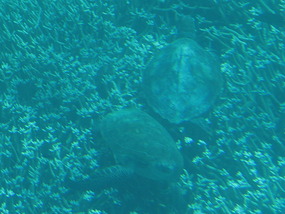
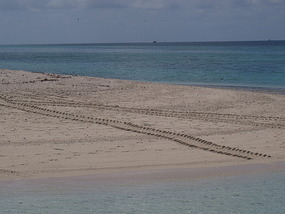
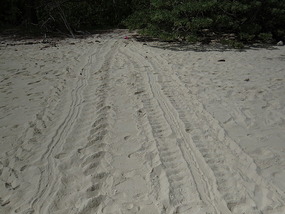
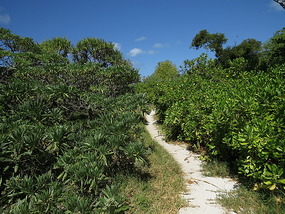
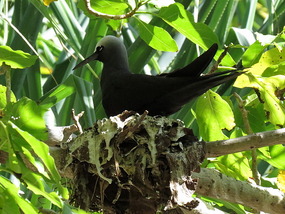
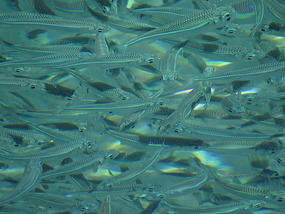

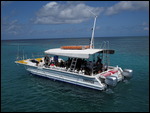
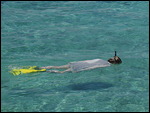
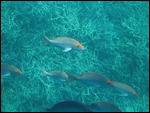
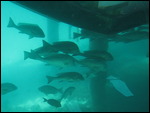
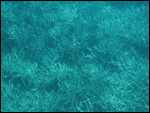

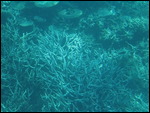
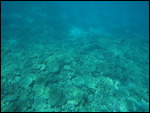
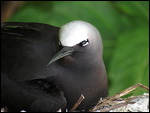
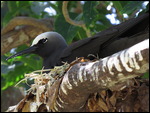

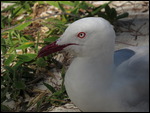

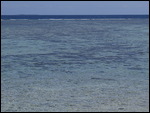
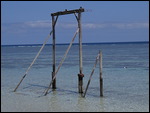
Gerald
2014-12-19
Leaving this island and the looming trip's end probably did combine for mixed emotion but also probably no better way to cap the whole experience for you.
Another great blog entry!